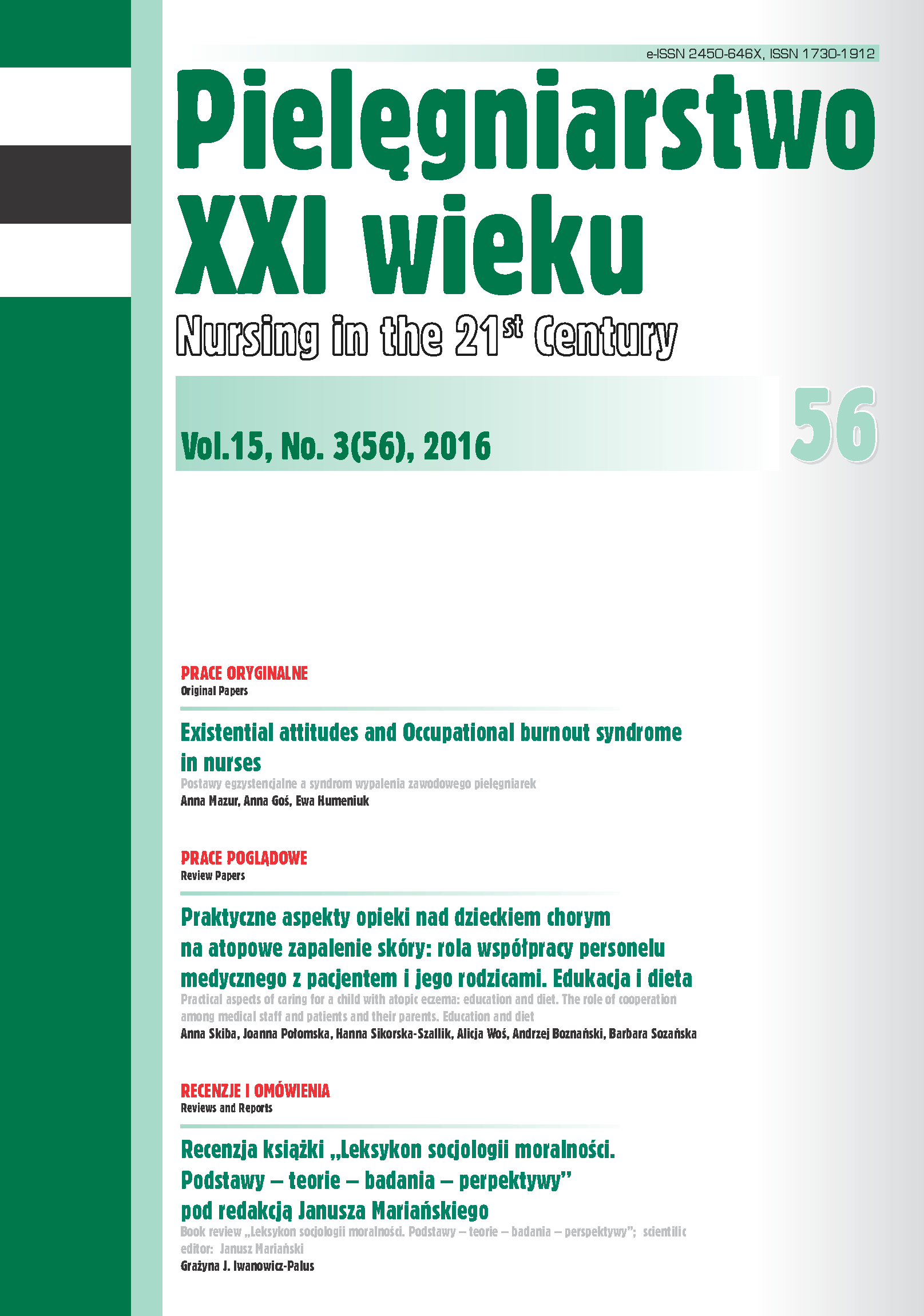Nursing in front of homeless problem in Poland
DOI:
https://doi.org/10.1515/pielxxiw-2016-0024Keywords:
homelessness, causes of homelessness, ills of homelessness, a professional role of nurseAbstract
NURSING IN FRONT OF HOMELESS PROBLEM IN POLAND
Introduction. A nurse in her profession meets different kind of people from all society levels. Not once she stands in front of a homeless patient and the dillemma about the sense of helping, which indeed is often “wasted”. Nonetheless the mission of this profession demands the need of seeing a human being in every patient who needs help. Homelessness is marked with a number of stereotypes and marginalisation which is very hard to overcome by oneself and provide the services on the highest level.
Aim. The aim of this work is to outline the cause of homelessness and to set out the role of nurse working with a homeless patient. Material and methods. In the analysis has mainly been used Polish literature of the subject written by distinguished theoreticians and researchers of this matter. There has also been used data from Central Office of Statistics. In addition, this work has been enriched by personal work experience with the homeless by one of the authors.
Results. In the analysed literature an answer was being looked for following questions: What are the causes of homelessness? What are the ills of homelessness? What is the characteristic of a homeless patient? What is the -professional role of the nurse working with homeless? The role of nursing, in this society, is essential and it demands wide Education. The nurse is sometimes the only person who can provide professional medical and therapeutical help to the homeless. One can rely only on its own abilities and skills, experiencing very often a feeling of helplessness. Following work should help in understanding the essence of homelessness in the way that homelessness itself becomes an extra reason to bring help.
References
1. Śledzianowski J. Przyczyny bezdomności spowodowane dysfunkcją rodziny. Roczniki Naukowe Caritas. 1997; Rok I: 57-69.
2. Główny Urząd Statystyczny. Raport z wyników. Narodowy Spis Powszechny ludności i mieszkań 2011. (on line). Dostępne: [http://www.stat.gov.pl/cps/rde/xbcr/gus/lud_raport_z_wynikow_NSP2011.pdf]. Pobrane 15.04.2016.
3. Przemieński A. Bezdomność, jako kwestia społeczna w Polsce współczesnej. Akademia Ekonomiczna w Poznaniu, Poznań 2001.
4. Declerck P. Rozbitkowie. Rzecz o paryskich kloszardach. WWL Muza S.A., Warszawa 2004.
5. Sidorowicz S. Psychospołeczne aspekty bezdomności. Roczniki Naukowe Caritas. 1997; Rok I: 103-114.
6. Freud S. Poza zasadą przyjemności. PWN, Warszawa 2005.
7. Chwaszcz J. Osobowościowe i społeczne wyznaczniki funkcjonowania bezdomnych mężczyzn. Towarzystwo Naukowe KUL, Lublin 2008.
8. Kępiński A. Rytm życia. Wydawnictwo Literackie, Kraków 2012.
9. Kępiński A. Melancholia. Sigittarius, Kraków 1993.
10. Śledzianowski J. Zdrowie bezdomnych. Akademia Świętokrzyska Zakład profilaktyki Społecznej i Resocjalizacji, Kielce 2006.
11. Poznańska S. Pielęgniarka w opiece nad zdrowiem W: Zahradniczek K (red.). Pielęgniarstwo. PZWL, Warszawa 2006; 45-50.
12. Podgórska-Jachnik D. Praca socjalna z osobami bezdomnymi. Centrum Rozwoju Zasobów Ludzkich, Tom 20, Warszawa 2014.
Published
Issue
Section
License
Copyright (c) 2016 Authors

This work is licensed under a Creative Commons Attribution-NonCommercial-NoDerivatives 3.0 Unported License.




